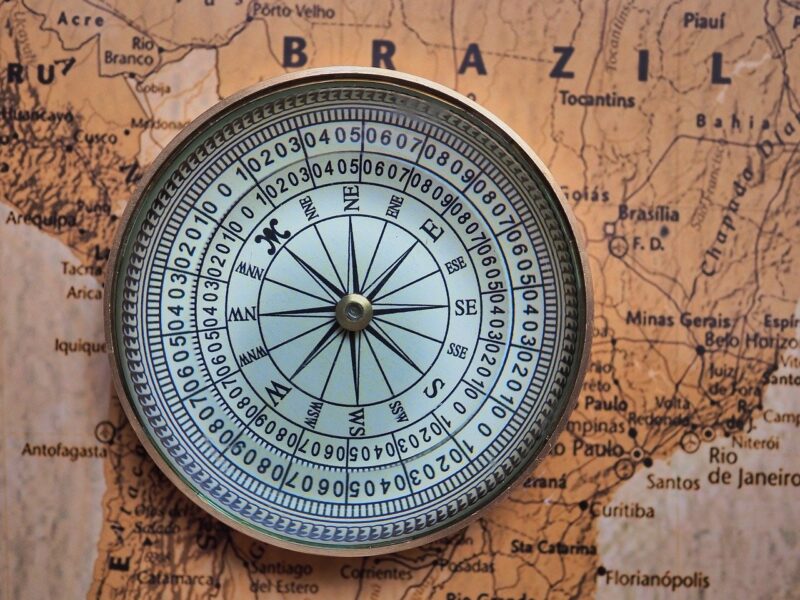How Compass Navigation Made Ocean Exploration Possible
November 15, 2024

The sea, vast and seemingly endless, has always been a source of mystery, adventure, and discovery. For centuries, maritime navigation was fraught with difficulties, primarily the inability to determine one’s location at sea accurately. However, the invention of the compass revolutionized navigation, allowing sailors to explore the oceans with newfound confidence and safety.
1. The Birth of the Compass
The compass as we know it today has its roots in ancient China, where the first magnetic compasses were created during the Han Dynasty (206 BC – 220 AD). Initially used for divination, these early compasses had no bearings of direction; instead, they pointed towards magnetic north without a specific orientation for navigation purposes.
It wasn’t until the 11th century that the compass began to be used for navigation on the seas. European sailors, witnessing the importance of this tool during their interactions with the Chinese, quickly adopted it. These early navigators began modifying the compass, adapting the device with more reliable pointers and mounting them in a way that made them easier to use on ships.
2. How the Compass Works
A compass functions by utilizing the Earth’s magnetic field to indicate direction. It contains a lightweight magnetized needle, which aligns itself with the magnetic poles of the Earth. The needle rests on a pivot point, allowing it to rotate freely.
The cardinal directions are as follows:
- North: The direction toward the North Pole.
- South: Opposite to north, leading toward the South Pole.
- East: The direction perpendicular to north and south, where the sun rises.
- West: The direction perpendicular to north and south, where the sun sets.
Knowing these directions allowed sailors to plot a course across the ocean, making it not just easier, but possible to navigate out of sight of land.
3. The Compass and Its Impact on Exploration
With the compass at their disposal, navigators ventured into the unknown expanses of the ocean. The Age of Exploration in the 15th and 16th centuries is characterized by remarkable voyages, many of which would not have been possible without the compass. Notable explorers such as Christopher Columbus, Vasco da Gama, and Ferdinand Magellan leveraged this groundbreaking tool to chart new territories and establish trade routes.
Consider Columbus’ 1492 expedition; equipped with a compass, he was able to navigate the unpredictable waters of the Atlantic Ocean. Instead of relying solely on celestial navigation, which required clear skies and predictable positions of stars, the compass gave him a reliable guide in the tumultuous sea. This ability to consistently maintain a direction played a crucial role in his discovery of the Americas.
4. The Evolution of Navigation Techniques
While the compass was revolutionary, it was just the beginning. Mariners combined its use with other techniques, including dead reckoning and celestial navigation, to enhance their accuracy.
Dead reckoning involves keeping track of one’s last known position, heading, and speed over time to estimate current position. Together with the compass, this method allowed sailors to navigate over long distances with relatively acceptable accuracy. Moreover, celestial navigation uses the position of sun, moon, stars, and planets, combined with the compass, to determine one’s location more precisely.
As these techniques improved with advancements in maritime technology, education, and map-making, ocean exploration expanded further, leading to the eventual colonization of entire continents and trade routes connecting the globe.
5. The Compass in Modern Navigation
In contemporary times, navigational tools have evolved dramatically. With the advent of GPS technology, the compass has taken on a different role. Although modern navigators do still utilize magnetic compasses, GPS systems provide real-time location and precise navigational information.
Despite this, understanding how to use a compass remains an essential skill for adventurers, sailors, and general outdoor enthusiasts. Emergency situations (like GPS failures) emphasize the importance of knowing basic navigation skills, which can mean the difference between life and death.
Additionally, as outdoor recreation grows in popularity, knowing how to use both compasses and GPS systems creates a comprehensive approach to navigation, ensuring that individuals are well-equipped for their journeys.
6. Conclusion: The Compass as a Tool of Discovery
In summary, the compass revolutionized the way humanity explored and interacted with the vast oceans of our planet. The innovation of this simple yet effective tool enabled explorers to venture into unknown waters, supporting the Age of Exploration and shaping the world as we know it today.
As we move into a future dominated by technology, the legacy of the compass remains vital. Whether through traditional navigational courses or its integration into advanced GPS systems, the compass continues to be a symbol of exploration, adventure, and the relentless human spirit in the quest for discovery.








